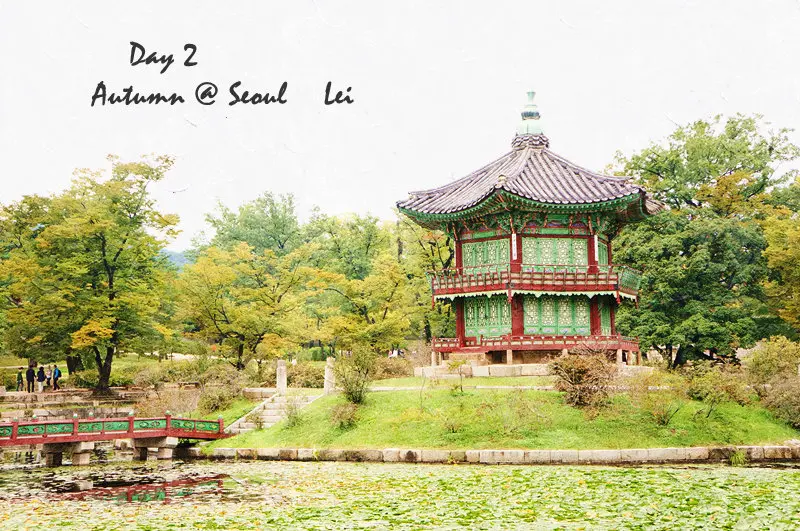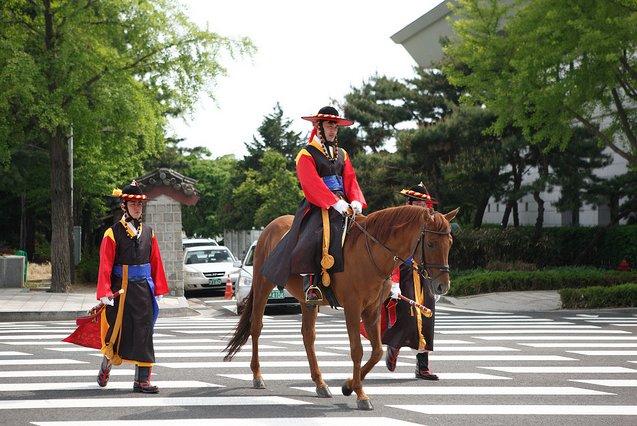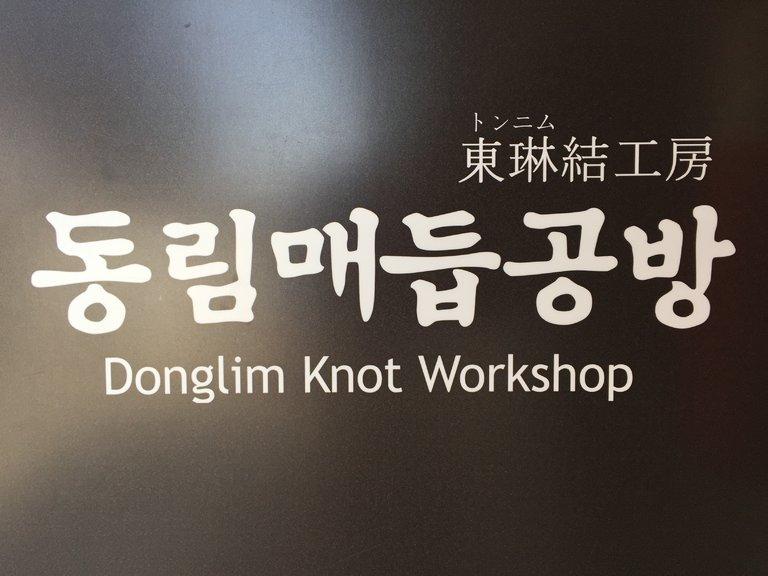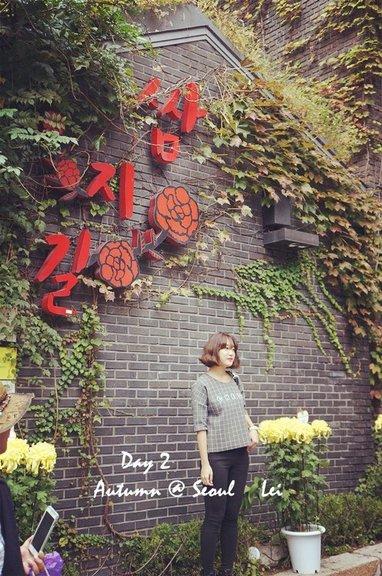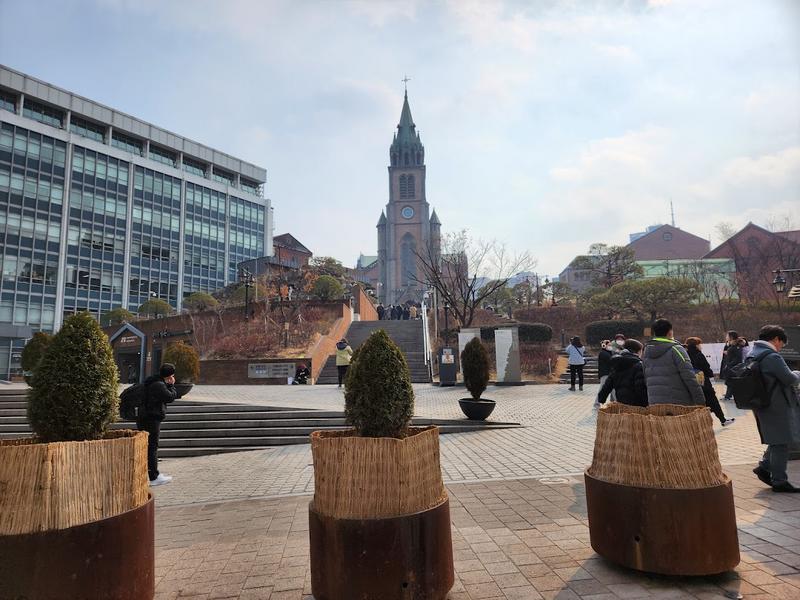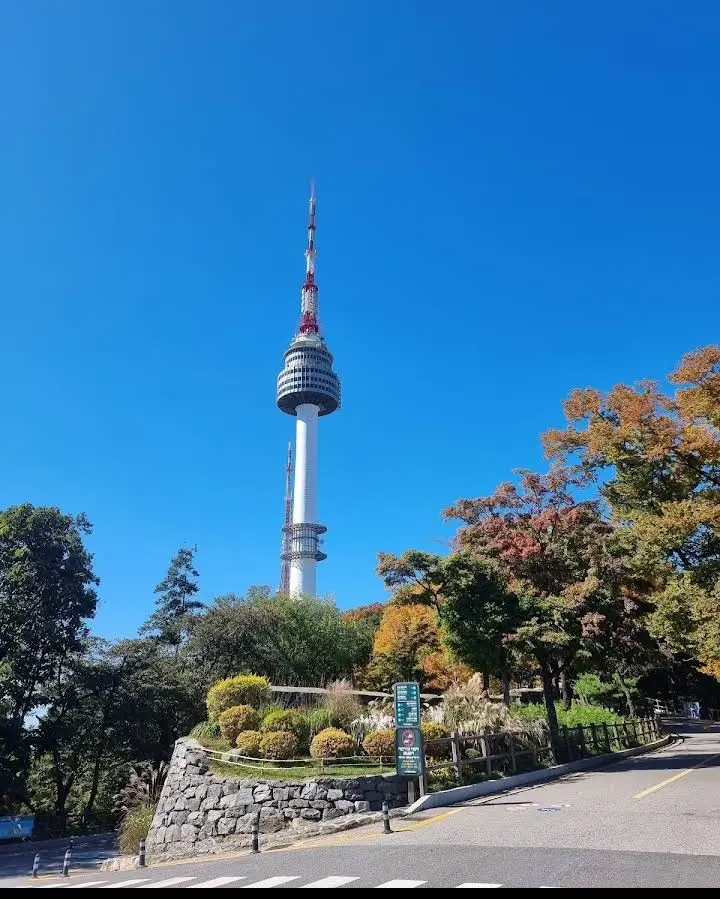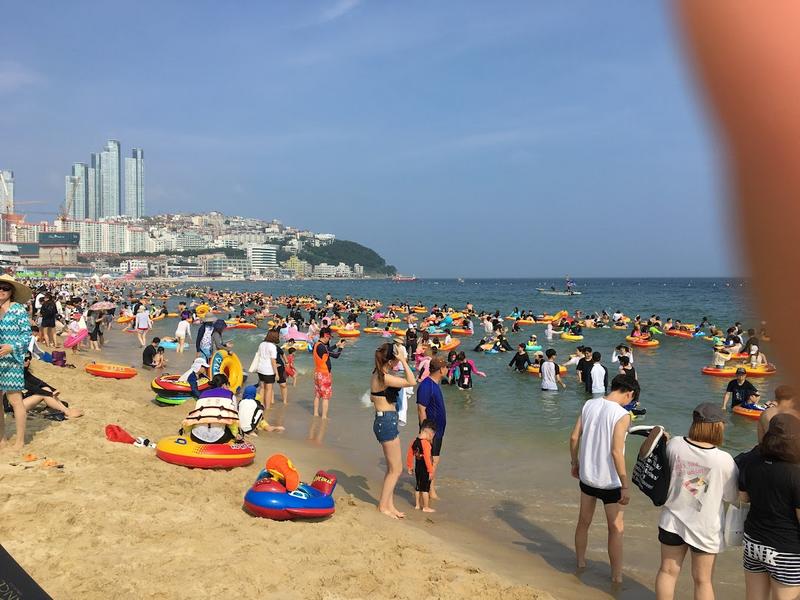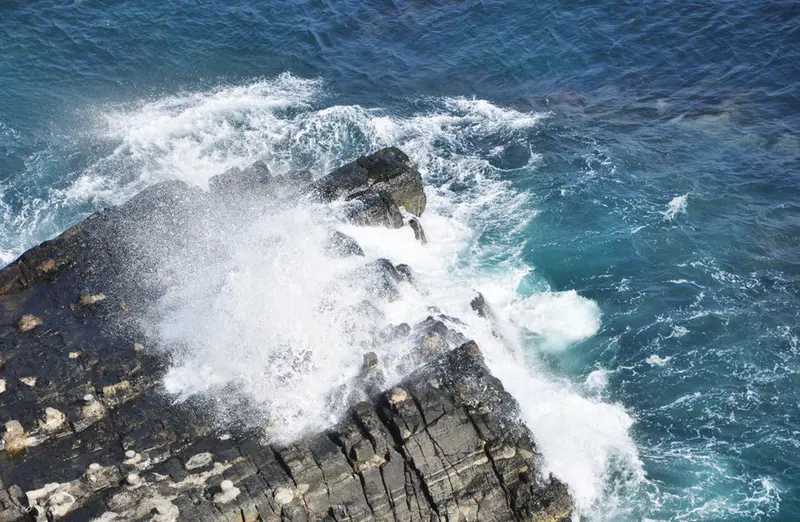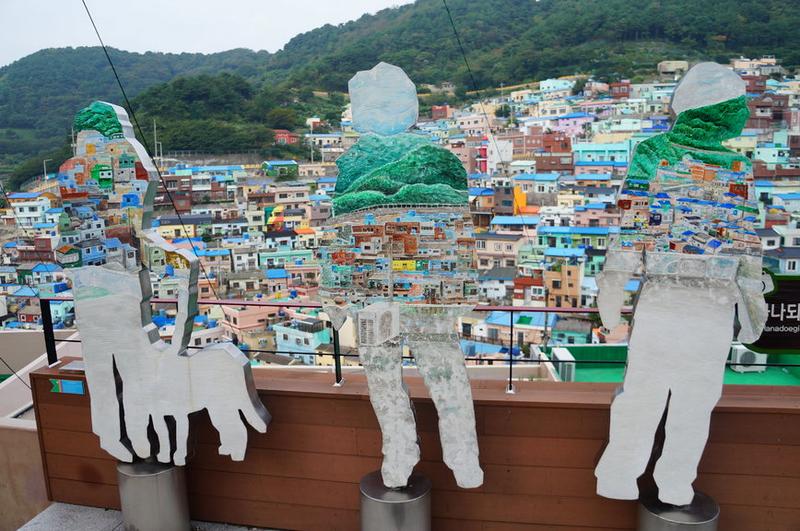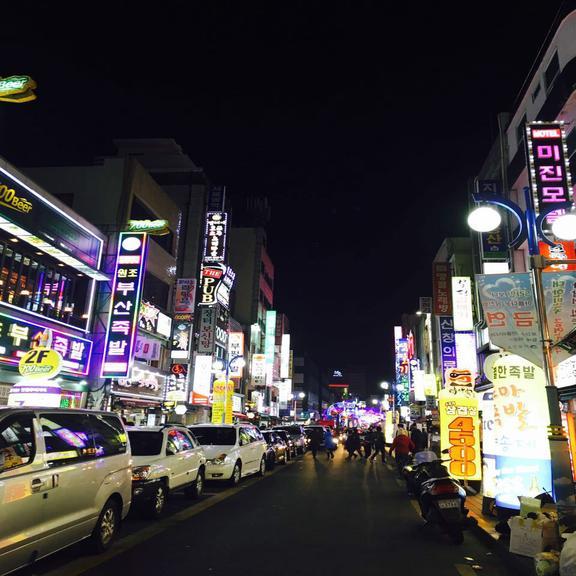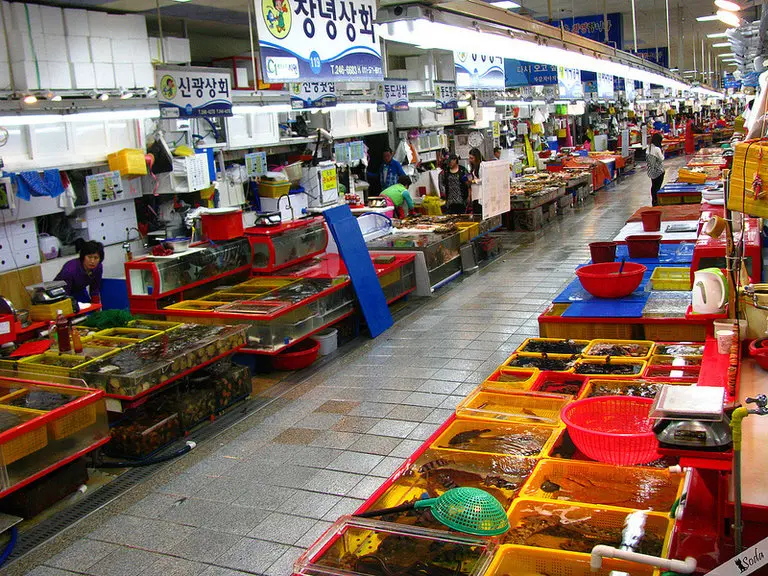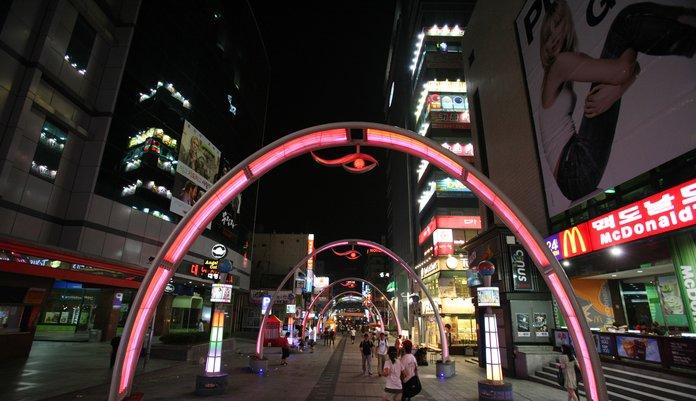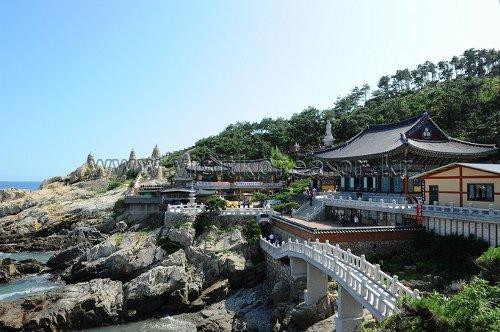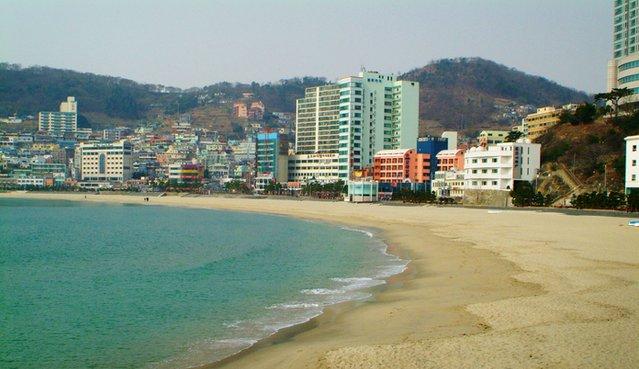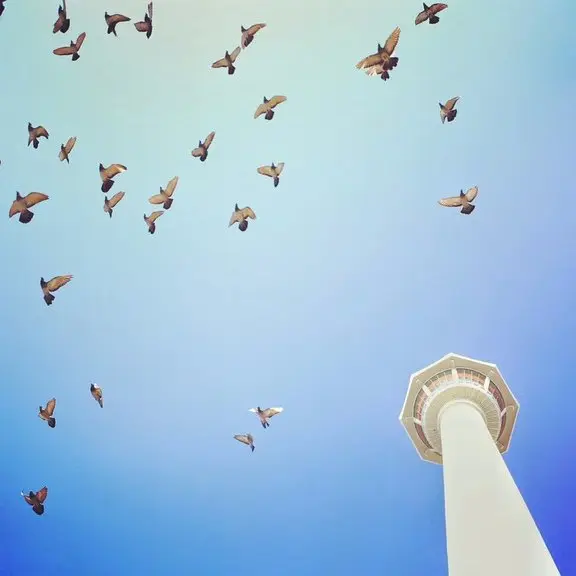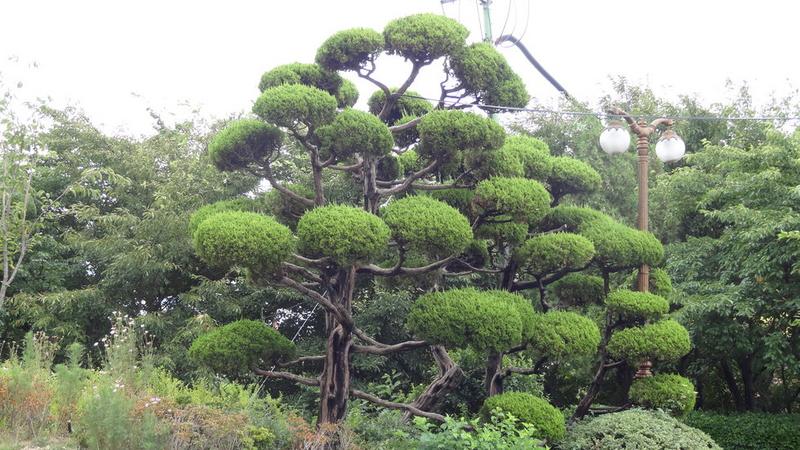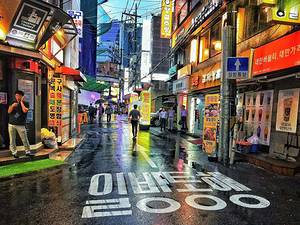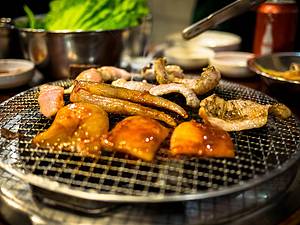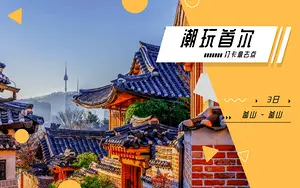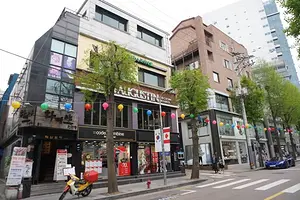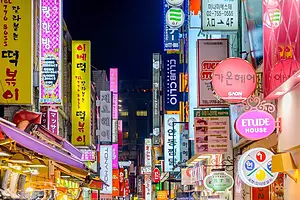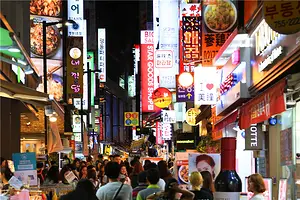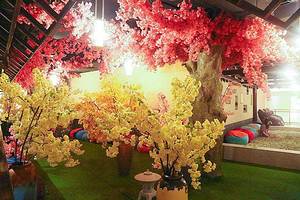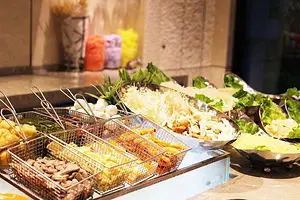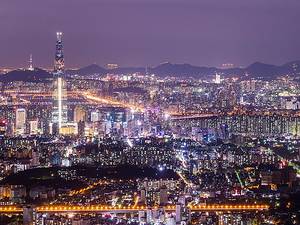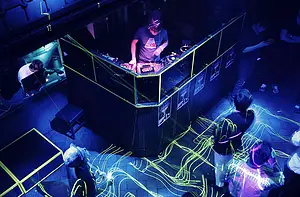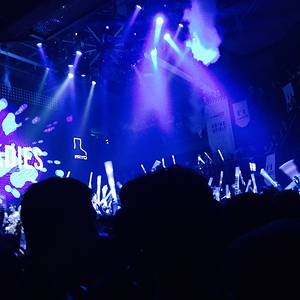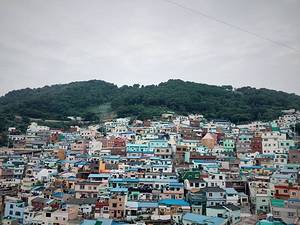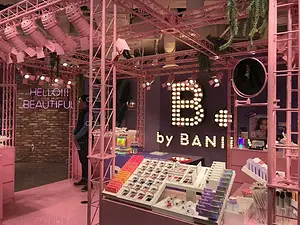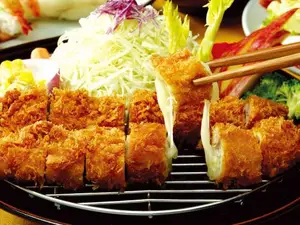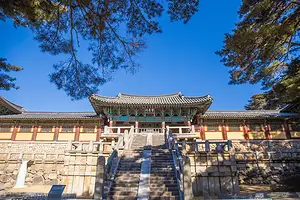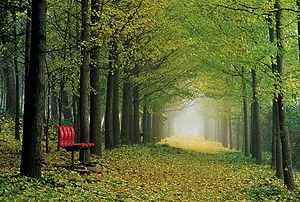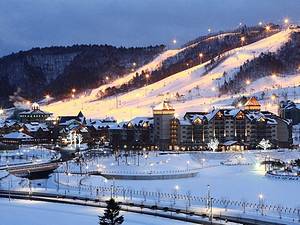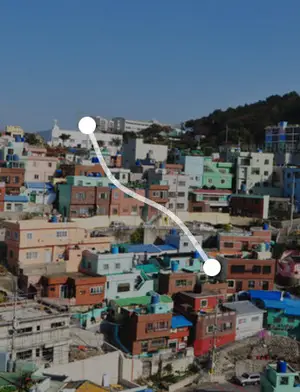Wonderful 5-Day Tour: Seoul Busan Cultural Tour
2 cities |
19 attraction(s) |
total distance 411
km
 TIPS
TIPS
Day1
Day2
Day3
Day4
Day5
Day1: Seoul
4 attraction(s) ·
3 km
1
Gyeongbokgung Palace is the first palace built in the early days of the Joseon Dynasty, with a history of 600 years. It was once a grand palace and now showcases delicate beauty. Gyeongbokgung Palace is the largest of the Five Grand Palaces and features unique architecture such as Geunjeongjeon Hall and Gyeonghoeru Pavilion. In addition, there are the National Palace Museum and the National Folk Museum where visitors can explore and experience. Gyeongbokgung Palace is open to the public and there is a ticket office at the entrance of Gwanghwamun. Visitors can also watch the Changing of the Guard ceremony and take photos with the guards, immersing themselves in Korean classical culture.
The name Gyeongbokgung means "great blessings and prospering the nation," reflecting the early aspirations of the Joseon Dynasty. It was completed in 1395 and at its peak had over 390 buildings. During the Japanese invasion in the late 16th century, Gyeongbokgung Palace was burned down and remained abandoned for 273 years. It was restored during the reign of King Gojong but suffered significant damage during the Japanese colonial period, with some buildings demolished and replaced by the Government-General Building. After Korea's independence, Gyeongbokgung Palace gradually underwent restoration, with the completion of the restoration project of Gwanghwamun Gate in 2010. There are also guided tours available in Chinese, departing from the inside of the Geunjeongmun Gate at four designated times.
1
km
2
Blue House, the presidential office and political center of South Korea, gets its name from its unique blue tiled roof. Located in a beautiful area, Blue House is highly regarded among foreign tourists. To visit Blue House, one must apply in advance on the website and once approved, visitors must follow the staff's instructions. Photography is only allowed in designated areas and visitors are not allowed to bring food or record videos. Additionally, foreign tourists must carry their passports when visiting Blue House.
2
km
3
Bukchon Hanok Village is one of the most representative places to experience traditional Korean residential culture. Here, you can feel the authentic living atmosphere as it is a residential area. Therefore, when you visit here as a tourist, please keep quiet so as not to disturb their daily lives. Of course, taking photos here is also an excellent choice. If you want to find the eight major attractions of Bukchon and take beautiful pictures, don't worry about getting lost because there are ground signs to guide you to the best shooting spots. The services here are very thoughtful and convenient for tourists.
1
km
4
Insa-dong, like Shanghai's Tianzifang, is just a step away from Gyeongbokgung Palace. Although its area is not large, with only one main street and a few perpendicular alleys, it was once the residential area of the Joseon Dynasty's noble class. Today, Insa-dong is home to numerous art galleries, museums, and specialty shops. Walking on the stone-paved Insa-dong Street, history is solidified with every brick and tile underfoot, and you can experience the coexistence of classical and avant-garde Korean culture. Here, you can find a Starbucks with a Korean signboard, the most distinctive Korean souvenir store in Seoul, and traditional Korean tea shops, which are treasures of this place. It is definitely an unforgettable experience to have a cup of traditional Korean tea, taste various traditional snacks, and sit in a traditional tea house to feel the lovely atmosphere here. Moreover, you can find some Korean souvenirs that are not available elsewhere! Even locals may not be familiar with the objects in Insa-dong, but the movie "The Scandalous Lady W" by Jang Lee-yeong has added a touch of mystery and interest to this place, which is definitely worth a visit.
Day2: Seoul
4 attraction(s) ·
5 km
1
Many high-end international stores & restaurants draw crowds to this bustling retail district.
2
km
2
Opened in 1980, this iconic tower offers panoramic views of the city & a revolving restaurant.
3
km
4
Bustling shopping area offering a wide array of traditional food items, plus clothing & souvenirs.
Day3: Busan
3 attraction(s) ·
15 km
1
Expansive beach with lively crowds & convenient access to a variety of hotels, cafes & restaurants.
4
km
2
Bi-level highway suspension bridge with impressive views, featuring a seasonal light display.
12
km
3
태종대
Feel the refreshing scent of the sea as you close your eyes and let the silver-white waves wash over you. This beautiful masterpiece is created by the waves, wind, and the passage of time. When you open your eyes, the captivating scenery of Taejongdae unfolds before you, leaving you in a state of enchantment.
Day4: Busan
4 attraction(s) ·
3 km
3
Jagalchi Market is the largest fish and seafood market in Korea, offering the freshest seafood daily. As one of the must-visit tourist attractions in Busan, it is a popular destination for foreign visitors. The enthusiastic ajummas (middle-aged women) in the market, speaking in their strong dialect, invite tourists to taste the seafood. The market showcases the charm of Busan. Every year in October, the Jagalchi Festival takes place here, featuring a variety of activities, including experiential events and cultural performances.
1
km
4
Day5: Busan
4 attraction(s) ·
26 km
1
해동 용궁사
Haedong Yonggungsa Temple, located on the east coast of Busan, is the only temple in Korea that sits by the sea. It was originally built in 1376 by the esteemed monk Naong. One of the most captivating features of the temple is its 108 steps and the Sunrise Rock. To enter the temple, one must climb all 108 steps, with the Sunrise Rock located midway. Standing on this massive rock, you can hear the waves crashing against the cliffs and witness the magnificent sunrise. Many people come here on New Year's Day to welcome the sunrise and make wishes for the year ahead. In April, the entrance to the temple is adorned with beautiful cherry blossoms. On the birthday of Buddha, the temple illuminates with lights, creating a stunning nighttime spectacle.
23
km
3
Longtoushan Park is a great place to view the panoramic view of Busan city. From here, you can have a 360-degree view of the spectacular scenery of the city, including the vast harbor, the sea and the blue sky. The buildings here are numerous and full of vitality, definitely worth a visit. In addition, there is a small store that offers coffee and other drinks. You can enjoy the beautiful scenery while savoring delicious food, which is great.
1
km
4
Haeundae Beach is a popular tourist destination with a long sandy beach and calm waters. The beach is approximately 1.5 kilometers long and 30-50 meters wide, with an average depth of 1 meter. It attracts visitors from both domestic and international travelers throughout the year, not just during the summer. Haeundae Beach also hosts various festivals and events, such as the Lunar New Year Moon Viewing Festival, the Polar Bear Winter Swim Festival, sand sculpture exhibitions, and the Busan Sea Festival. The beach area is also surrounded by a variety of attractions and amenities, providing a great vacation experience for visitors. Additionally, Haeundae Beach is considered one of the top eight beaches in South Korea and offers a free foot bath with hot spring water. It was featured in the 2009 movie "Haeundae," adding to its popularity.
